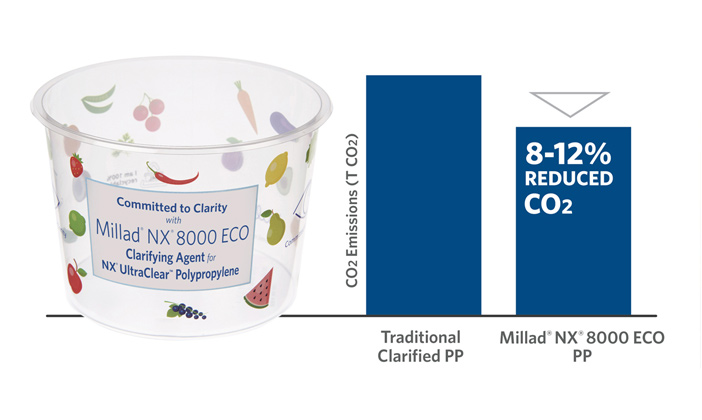Reducing plastics industry carbon emissions in a rapidly changing world
March 12, 2021 by Zach AdamsBy any measure 2020 has been a momentous year. Beyond the obvious health, social and economic impacts of the COVID-19 pandemic there has also been some sobering news on one of the other key challenges facing society – climate change.
In September a major new report, United in Science1, bringing together experts from across the United Nations and the UK’s Met Office, presented an updated snapshot of the state of the global climate. Despite a slowing in carbon emissions in early 2020 due to the coronavirus pandemic, greenhouse gas concentrations in the atmosphere are at their highest levels in three million years whilst 2016-2020 is set to be the warmest five-year period on record. The report also highlighted the growing gap between the action that is needed to keep warming under safe temperature thresholds and the reality of efforts to cut emissions.
Initiatives from Brussels to Beijing and Washington
Yet just after the report was released, in a surprise announcement to a virtual meeting of the United Nations General Assembly, President Xi Jinping pledged that China, the world’s largest emitter of carbon dioxide, would become carbon neutral before 2060, and begin cutting its emissions within the next ten years2. Many believe this could be a tipping point in the global fight against climate change.
In the United States, President Joe Biden has already taken action. The US has re-joined the Paris Climate Agreement and his next initiative is a 2-trillion US dollar clean energy and infrastructure plan with a goal of net-zero emissions for the country by 2050.
And in Europe, last but not least, early 2020 saw the unveiling of the EU’s Farm to Fork Strategy3, part of the European Green Deal, that sets out a vision to change the way Europeans value food sustainability and position Europe as the first climate neutral continent by 2050.
What role will global industry play?
Together, these initiatives cover almost 50% of the world’s economy and are likely to have a significant global impact on many industries, from transport to energy and agriculture. What role can the plastics industry play in helping to drive down CO2 emissions and contribute to these carbon neutral and sustainability targets?
The Center for International Environmental Law has gathered global data on how much greenhouse gas is produced making plastic, cradle to grave, estimating that total life-cycle emissions from plastics use could amount to 56 gigatons of carbon between now and 20504.
Plastics could be replaced however these replacement materials could come with their own life-cycle burdens. The Plastics Division of the American Chemistry Council recently published a study on the potential effects of substitution5. Converting from plastic packaging to alternatives generated 69% more CO2 emissions and 390% more solid waste by weight (83% by volume) and consumed 90% more energy and 481% more water.
Another focus is increased recycling and the move towards a plastics circular economy. This is a key component of the EU’s Farm to Fork Strategy in which it wants to support the use of innovative and sustainable packaging solutions and promote re-usable and recyclable materials.
Next generation additives for a more climate friendly future

The plastics industry is moving towards circularity. The New Plastics Economy, led by the Ellen MacArthur Foundation and UN Environment, is uniting businesses, governments and other organisations behind a common vision to create a circular economy for plastic, across the plastics value chain.
For example, Millad® NX® 8000 ECO for polypropylene (PP) is an additive that delivers crystal clear glass like clarity, while extending sustainability and productivity in injection molding processes. Offering excellent solubility in PP with a high melt flow rate (MFR), it delivers on the growing demand for high MFR grades to support faster production.
Recognized by the Association of Plastic Recyclers in the US and RecyClass in Europe for its compatibility with plastic packaging recycling, Millad NX 8000 ECO is suitable for all conversion processes, making clarified polypropylene a viable alternative to glass or amorphous polymers like PC, PET, PVC and PS.
In addition it allows converters to process PP at lower temperatures, meaning Millad NX 8000 ECO can reduce energy consumption by around 10% compared to conventional clarifiers. Its success in promoting energy-efficient operations means that parts produced with Millad NX 8000 ECO can use the UL Environmental Claim Validation label to highlight the energy consumption reductions achieved with its use.
UL, or Underwriters Laboratories, is a global safety science leader that conducts third-party, science-based validation of a product’s environmental claims, helping to demonstrate sustainability efforts. This validation, in areas including recyclability, energy savings and bio-based content, provides instantly recognizable and verified information to manufacturers and consumers.
As a member of the plastics industry’s long-standing “Responsible Care” initiative, Milliken is constantly working to advance the sustainability of our entire product portfolio, contributing to carbon emission reductions. Millad NX 8000 ECO supports our customers’ emission reduction efforts, its environmental advantages are helping to drive strong global demand and show an industry push towards sustainability and circularity. We are committed to advancing and scaling new technologies that make recycling and recovering plastics easier and help to contribute to a climate friendly future.
** For brands that would like to display the UL Label on their product(s), please contact Milliken for guidance and assistance.
References
1 https://public.wmo.int/en/resources/united_in_science
2 https://news.un.org/en/story/2020/09/1073052
3 https://ec.europa.eu/food/farm2fork_en
4 https://www.npr.org/2019/07/09/735848489/plastic-has-a-big-carbon-footprint-but-that-isnt
-the -whole-story?t=1604762230112
5 Franklin Associates, A Division of Eastern Research Group (ERG); Life cycle impacts of plastic packaging compared to substitutes in the United States and Canada: Theoretical Substitution Analysis. 2018 https://plastics.americanchemistry.com/Reports-and-Publications/LCA-of-Plastic-Packaging-Compared-to-Substitutes.pdf
